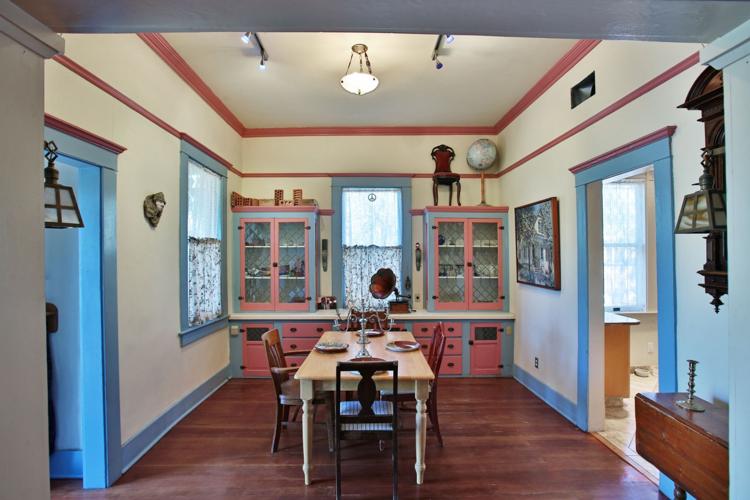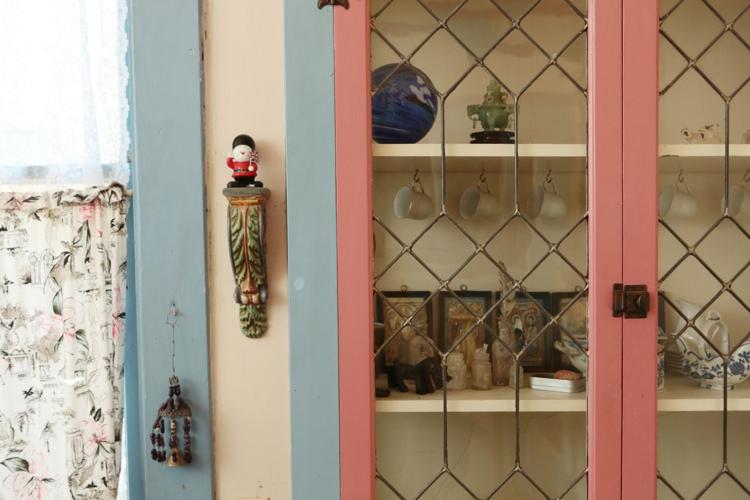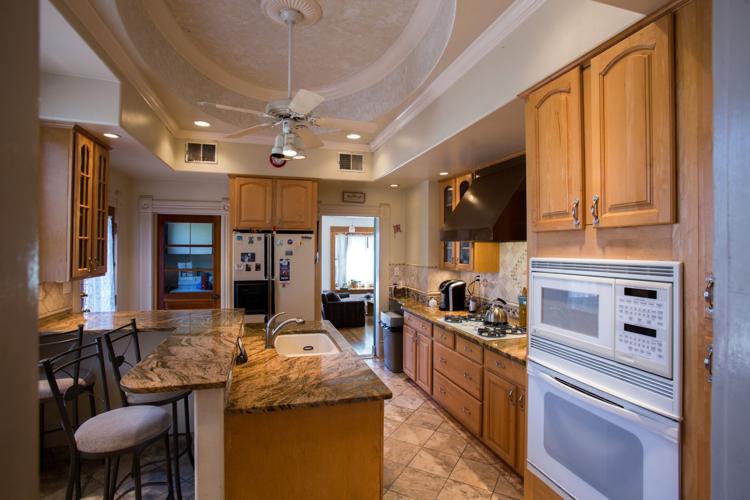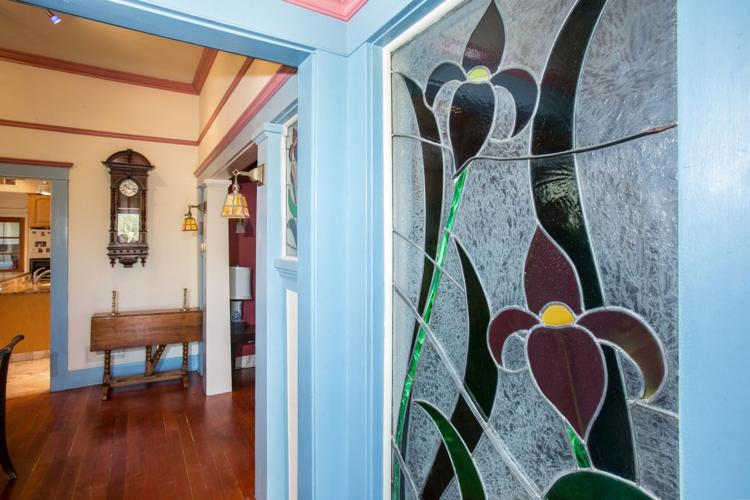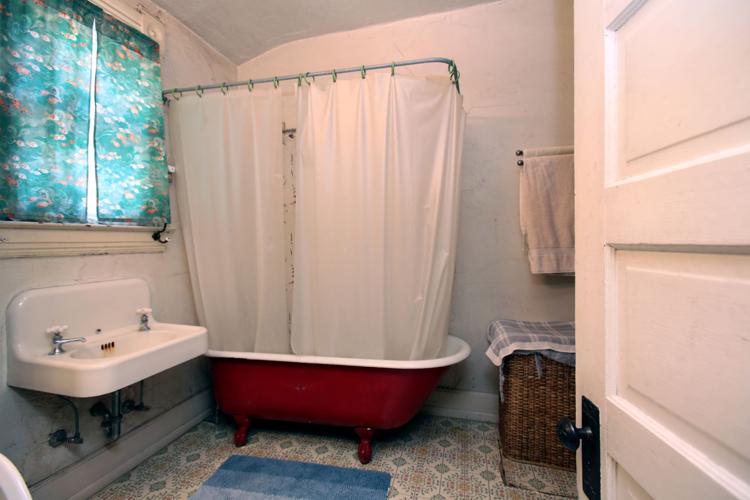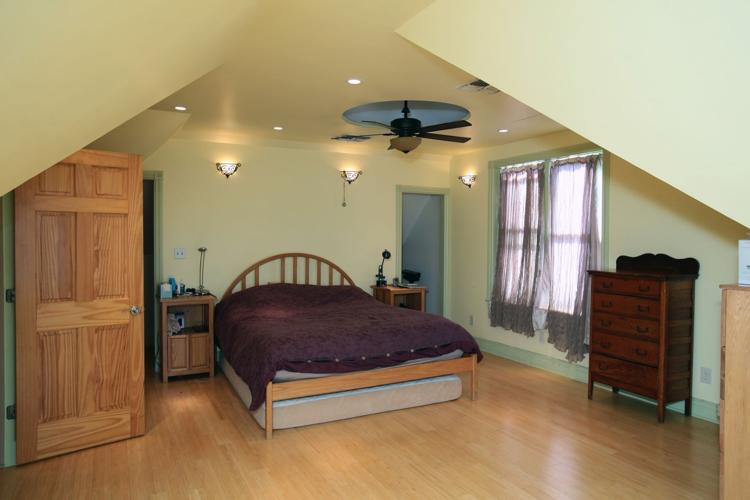It was on a lazy bike ride nearly 30 years ago that Chip Eisner saw the house he knew he had to have.
Eisner and his wife, Lorinda, were renters in 1988 on the other side of Stone Avenue, in the West University neighborhood, when their ride took them into the Dunbar/Spring neighborhood and he saw the “For Sale” sign in front of what he recognized as a Victorian Queen Anne.
Eisner had spent a good amount of his youth living in England, mostly around London, where his father, an English professor at the University of Arizona, would go on frequent sabbaticals. The style of home was familiar to him and he wanted one – badly.
“I like old houses because I used to work on old houses in England,” Eisner said. “I like Victorian houses because of their detail.”
But there were a couple of issues with the prospect of buying the house which was built in 1898. The couple wasn’t sitting on the pile of money needed for a down payment. And the neighborhood was admittedly going through a tough time, still years away from digging itself out from decades of distress. Still, the couple looked for a way to make it happen that day on the bike ride.
“We stopped and the woman who had it for sale was actually here,” Eisner recalled. “She showed us around. I talked to her about the terms. Back in those days it was common for a seller to do what they call ‘carry the note,’ meaning we didn’t have to go through a mortgage company.
“So I thought, ‘Well, wouldn’t that be great but how will we come up with the $5,000 (down payment).’ But things fell into place and we came up with the $5,000 and we bought the house.”
Fast forward to 2016, and the house remains a work in progress for the 63-year-old registered contractor who was preparing it last week to be featured in today’s Dunbar/Spring Neighborhood Tour. The tour of the historic neighborhood will feature a number of locations including homes, neighborhood businesses, public art and the signature water harvesting features that have led to a resurgence where residents can enjoy a safe walk around the neighborhood.
The self-guided tour begins at the neighborhood garden at the northwest corner of North 11th Avenue and University Boulevard at 1 p.m. and runs until 3 p.m. Tickets are $5 with 50 percent of the proceeds benefitting the Caridad Community Kitchen, a program of the Community Food Bank of Southern Arizona, located on the western end of the neighborhood.
The Daniels House, as Eisner’s house is called because of one of its long-time residents, Benjamin Daniels, is a 1,500-square-foot, two-story home with the style’s classic, peaked roof. Eisner had the raised front porch refinished in the last couple of weeks, a continuation of work that began the day he and his now ex-wife moved in.
At one point, the home was a law office and drop ceilings had been installed which were hiding the raised ceilings and classic molding throughout the house. Removing the drop ceilings and restoring the “crown molding” was one of the first projects. Eisner removed and refurbished most of the trim around the interior doors and entryways. The kitchen has been remodeled with modern amenities.
Another major project was completely refurbishing the 45-degree-angled roof which took place in 2004. At that time, Eisner removed all of the interior walls upstairs to make the two bedrooms into one large living space. He added a mini rotunda from where a ceiling fan now hangs above the king-sized bed.
Eisner said there originally was no indoor bathroom, only an outhouse. He believes a downstairs bathroom with plumbing was added in about 1905. That was the only bathroom in the house until he added one upstairs during the work done in 2004.
One of the more unusual features Eisner also installed was a “walk-through” closet behind the wall where the bed sits. A person can go into the closet on one side of the bed and come out on the other side.
Living within shouting distance of where the Southern Pacific Railroad passes by on a regular basis, Eisner went to extreme lengths to keep the sounds of the horns out of the upstairs living area.
“The train and I do not get along,” he said. “I did everything in this room to soundproof it.”
Eisner said he installed the same type of drywall and foam insulation that movie theaters use to try to contain the sounds of loud movies within individual theaters. The windows are “thermal pane low-E,” which is two layers of glass with a coating that cuts down sound and ultraviolet rays. There also is 12 inches of insulation in the ceiling.
On the one hand, while Eisner’s work at the house has returned much of the historical look to the home, he said he’s never gotten too caught up in the long history of the home or the neighborhood. He just sees it as the place where’s he’s lived for the last 28 years.
Still, he’s quick to bring up a little of the history surrounding the aforementioned owner, Benjamin Daniels, who reportedly was a friend of President Theodore Roosevelt and was mentioned in Roosevelt’s 1899 book, “The Rough Riders.”
Eisner said there’s a “rumor” that Roosevelt may have spent a night or two in the house, but he’s never been able to confirm it, although there are other accounts of Roosevelt’s presence in Tucson.
Various accounts of Daniels’ life indicate he was a one of the “Rough Riders” serving under Roosevelt in the U.S. Cavalry in the late 1800s. He also was a convicted horse thief who spent time in prison for the crime, but still managed to be appointed U.S. Marshal for Arizona – an appointment he received from Roosevelt − and ironically was warden of the Yuma Territorial Prison. Daniels’ was the Pima County Sheriff from 1921-1922 and died in Tucson in 1923. Eisner said Daniels’ wife, Ann, lived as a widow in the home until 1946.
The long history of the neighborhood, its existence as a primarily African-American neighborhood with a state-mandated segregated school, has been told in a book by long-time neighborhood resident Aloma J. Barnes, “Dunbar: The Neighborhood, The School and The People, 1940-1965.”
The neighborhood association website describes a difficult era for the neighborhood: “Dunbar/Spring and many older neighborhoods suffered economic decline during the post-war period after 1945 when suburban development rapidly expanded Tucson. By the 1970s and 1980s, many houses were abandoned or in disrepair, crime rates had increased, and those with means chose to live elsewhere. Commercial development along the edges of the neighborhood began to erode the residential fabric of the community, replacing historic homes with commercial businesses.”
But through efforts of the residents and local organizations such as the Tucson Urban League and the Juneteenth Festival Committee, the neighborhood has been through a significant and continuing transformation in recent years.
The two organizations helped form the Dunbar Coalition to purchase the closed John Spring Junior High School, which opened just before 1920 as the Paul Laurence Dunbar School, named after the renowned African-American poet. The coalition worked to turn the school into the Dunbar African American Culture Center, now a centerpiece of the neighborhood. A significant presence of artists in the formerly abandoned warehouses at the south end of the neighborhood also helped breathe life into the area.
“A core essence of this neighborhood and many of the people living here is a great ability to turn adversity into potential,” said Brad Lancaster, a resident since 1998 whose water harvesting efforts and involvement in tree-planting for the area have helped create a much more “walkable” neighborhood despite the absence of sidewalks.
“This is a neighborhood of open front porches, not closed garage doors,” he said. “The architecture encourages community interaction.”
While there are many examples of adversity that neighbors have faced over the years, one that continues to stand out as an oddity is the fact that nearly half of the neighborhood sits on a former cemetery that was not completely relocated when the houses and streets started going up.
The Court Street Cemetery, north of Second Street, still holds surprises for residents who might be digging a post hole for a fence or a mailbox. From time to time, police are summoned when someone digs up a human bone and it has to be determined by archaeologists that it’s remains from the early 1900s when the cemetery was in use.
Signs in a traffic turnabout at the intersection of First Street and 11th Avenue provide a good-natured poke at the existence of the cemetery. Residents just seem to live with the fact that it’s there, Lancaster said.
The existence of the cemetery “can mean that everyone north of Second Street is on very blessed land from all the blessings that people would conduct at the burials,” Lancaster said. “I can’t say that everyone looks at it that way. That was shared with me by a neighbor who lives at the old entry way.”
There’s no organized effort to exploit the existence of the cemetery for a spooky event around Halloween later this month. Installation of the signs with ghostly images were part of a public art project recognizing the existence of the cemetery.
“We all can choose the way we look at the world,” Lancaster said. “A lot of people aren’t aware that it’s there, especially newer residents. That was one attempt to make it known. If the neighborhood wanted to, it could make it a more conscious thing.”
Instead, it remains a part of the rich and eventful history of a proud neighborhood that celebrates its roots each day.



